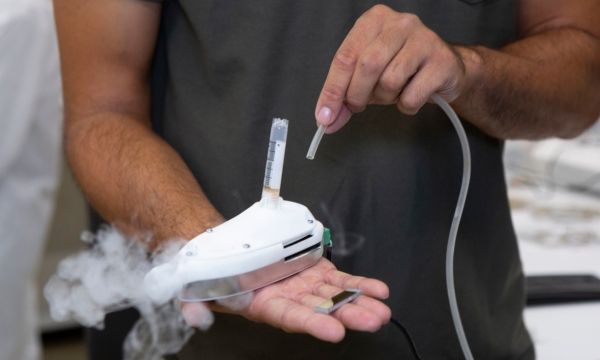Researchers have revealed how high-frequency sound waves can be used to build new materials, make smart nanoparticles and even deliver drugs to the lungs for painless, needle-free vaccinations.
While sound waves have been part of science and medicine for decades – ultrasound was first used for clinical imaging in 1942 and for driving chemical reactions in the 1980s – the technologies have always relied on low frequencies.
Now researchers at RMIT University have shown how high frequency sound waves could revolutionise the field of ultrasound-driven chemistry.
A new review published in Advanced Science reveals the bizarre effects of these sound waves on materials and cells, such as molecules that seem to spontaneously order themselves after being hit with the sonic equivalent of a semi-trailer.
Read more at RMIT University
Image: The patented ‘Respite’ nebuliser uses high-frequency sound waves to precisely deliver drugs to the lungs. CREDIT: RMIT University


